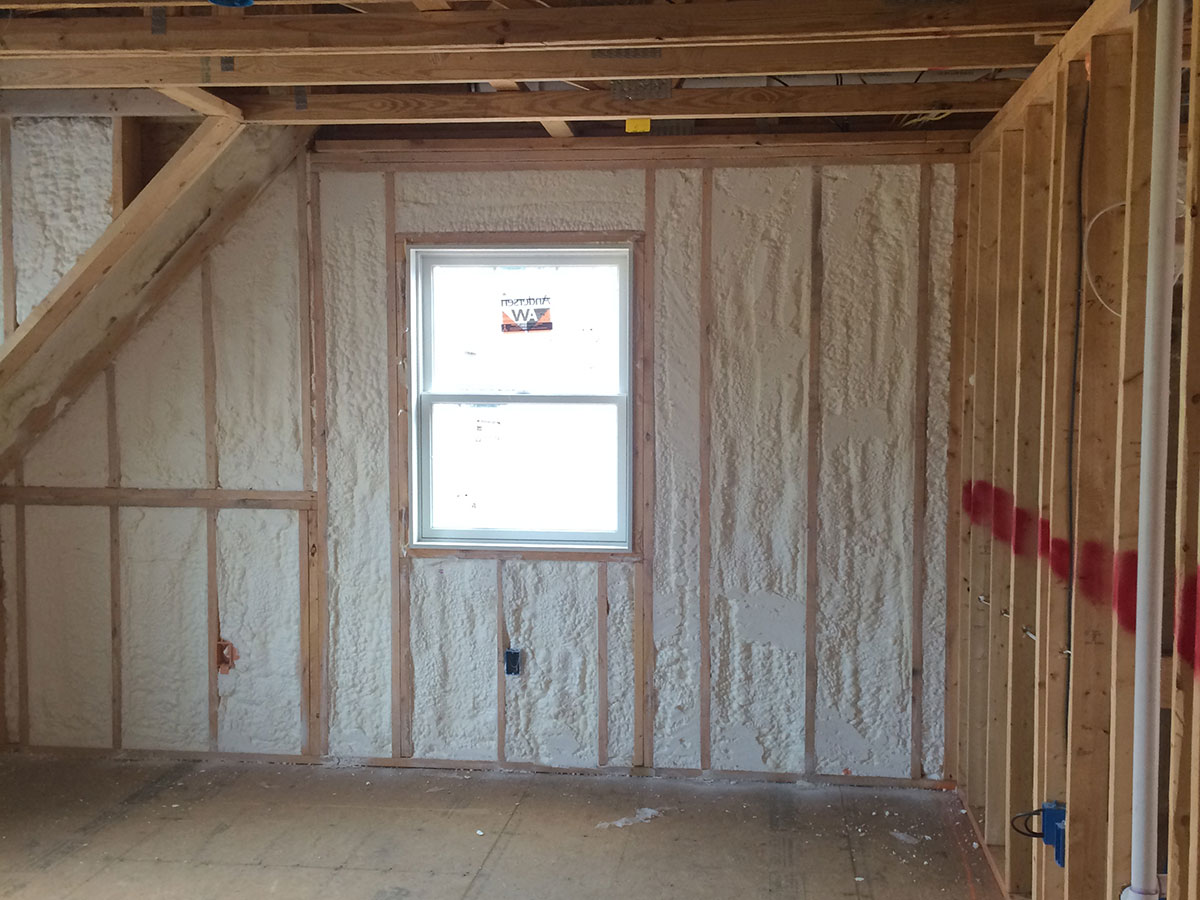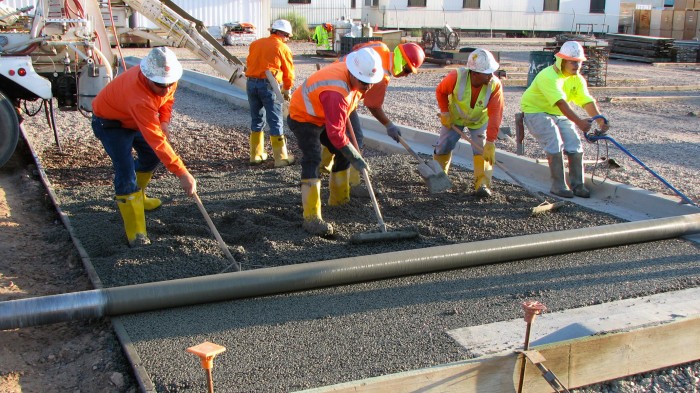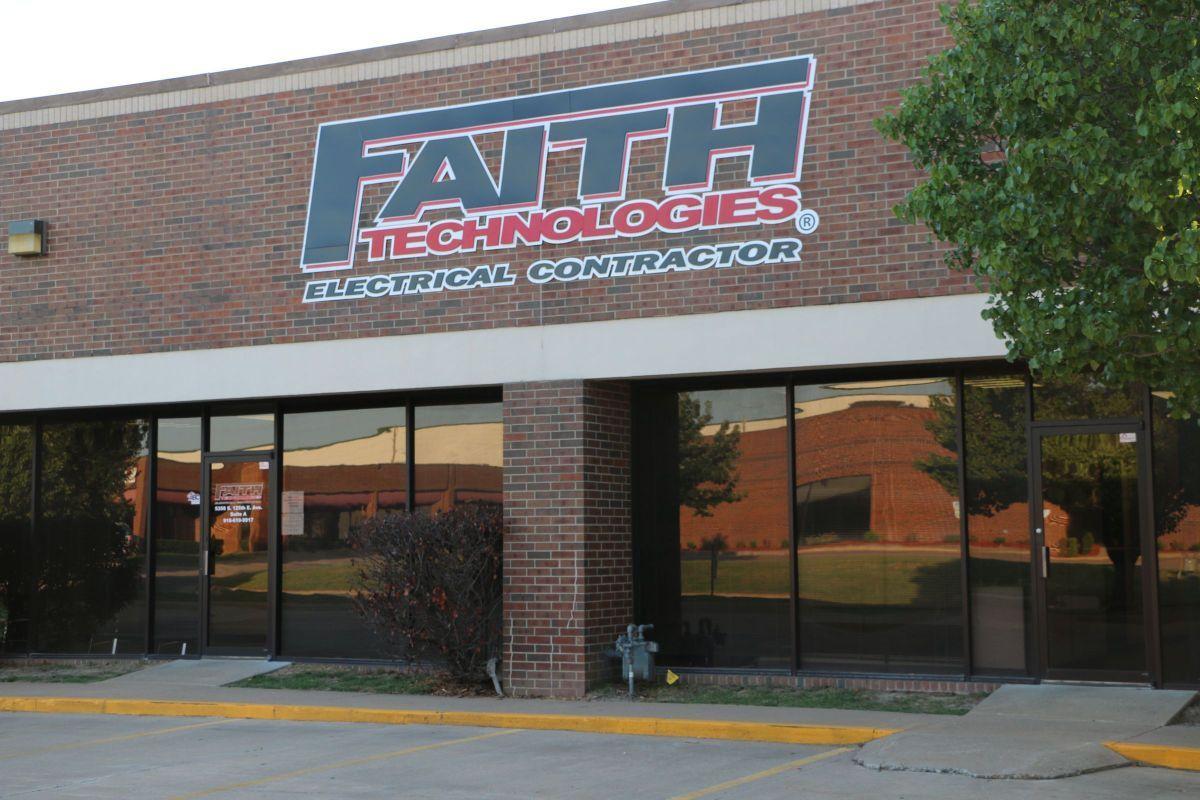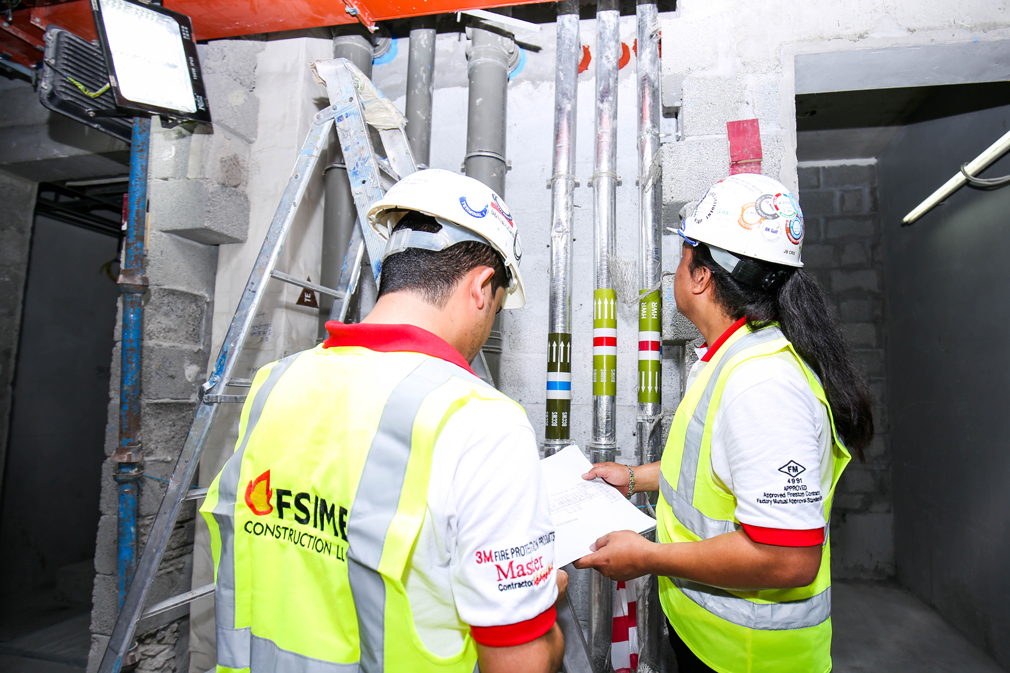Spray Foam Technologies: Insulations Evolution
Spray foam technologies have revolutionized insulation, offering a comprehensive solution for enhancing energy efficiency, air sealing, and moisture control. From its humble beginnings, spray foam insulation has evolved into a […]

Spray foam technologies have revolutionized insulation, offering a comprehensive solution for enhancing energy efficiency, air sealing, and moisture control. From its humble beginnings, spray foam insulation has evolved into a versatile and indispensable component of modern construction, finding applications across residential, commercial, and industrial sectors.
This versatile technology provides a seamless, airtight barrier that effectively reduces heat transfer, minimizes drafts, and controls moisture buildup, leading to significant energy savings and a more comfortable living environment. Whether applied to attics, walls, roofs, or foundations, spray foam insulation offers a multitude of benefits, making it a preferred choice for builders and homeowners alike.
Introduction to Spray Foam Technologies
Spray foam insulation has become increasingly popular in recent years due to its excellent thermal performance, air sealing capabilities, and versatility. It is a modern and innovative approach to insulation, offering significant benefits over traditional insulation methods.
History and Evolution of Spray Foam Insulation
Spray foam insulation has a rich history, dating back to the early 20th century. The first spray foam insulation products were developed in the 1920s, using a mixture of polyurethane and isocyanate. However, these early formulations were flammable and had limited applications. In the 1950s, significant advancements in chemical technology led to the development of more stable and fire-retardant spray foam formulations. The introduction of closed-cell spray foam in the 1970s marked a major breakthrough, offering superior moisture resistance and higher R-values. Today, spray foam insulation has evolved into a highly sophisticated and widely adopted insulation technology.
Types of Spray Foam Insulation
Spray foam insulation is available in two main types: open-cell and closed-cell.
- Open-cell spray foam: This type of foam has a porous structure with interconnected cells. It is typically less dense and less expensive than closed-cell foam. Open-cell foam is known for its excellent sound absorption properties and its ability to create a continuous air barrier.
- Closed-cell spray foam: This type of foam has a dense structure with tightly sealed cells. It is more rigid and offers higher R-values per inch compared to open-cell foam. Closed-cell foam is highly moisture resistant and can be used in a variety of applications, including below-grade insulation and roofing.
Chemical Composition and Properties of Spray Foam
Spray foam insulation is typically made from two main components:
- Polyol: This is a liquid polymer that acts as the base for the foam.
- Isocyanate: This is a chemical that reacts with the polyol to form the foam structure.
When these two components are mixed, they undergo a chemical reaction called polymerization, which produces a foam that expands and hardens. The properties of the foam, such as density, R-value, and moisture resistance, are determined by the specific chemical composition and the ratio of polyol to isocyanate.
Application and Installation of Spray Foam
Spray foam insulation is a versatile and effective material that can be applied to a wide range of surfaces, offering excellent thermal and acoustic properties. Its application involves a specialized process that requires proper preparation and execution to achieve optimal results. This section delves into the different methods of applying spray foam insulation, best practices for preparing surfaces and applying spray foam, and the essential tools and equipment required for a successful installation.
Methods of Applying Spray Foam Insulation
Spray foam insulation is typically applied using specialized equipment that mixes and dispenses the foam in a liquid form. The foam expands rapidly after application, filling voids and creating a continuous, airtight barrier. The application methods vary depending on the type of spray foam used and the specific project requirements.
- Closed-cell spray foam: This type of foam is typically applied using a high-pressure spray gun. The gun mixes the two components (resin and isocyanate) and propels the mixture onto the surface. Closed-cell foam is denser and more rigid than open-cell foam, making it ideal for applications where structural support and moisture resistance are crucial.
- Open-cell spray foam: This type of foam is often applied using a low-pressure spray gun. It is lighter and less dense than closed-cell foam, offering excellent thermal insulation but less structural support. Open-cell foam is often used in applications where sound absorption and breathability are desired.
- Two-component spray foam: This type of foam requires two separate components that are mixed together at the nozzle of the spray gun. This method provides more control over the foam’s expansion and application rate.
- Single-component spray foam: This type of foam comes pre-mixed and only requires a single nozzle for application. It is often used in DIY projects and smaller applications where ease of use is a priority.
Preparing Surfaces for Spray Foam Application
Proper surface preparation is crucial for ensuring a successful spray foam installation. This involves cleaning the surface and addressing any potential issues that could affect the adhesion and performance of the foam.
- Cleaning: The surface should be free of dust, dirt, debris, oil, and grease. A thorough cleaning using a suitable solvent or pressure washer is recommended.
- Moisture control: Spray foam is susceptible to moisture damage, so it is important to ensure that the surface is dry and free of moisture. This may involve using a moisture meter to measure the moisture content of the surface.
- Addressing gaps and cracks: Any gaps or cracks in the surface should be filled with a suitable sealant or caulk before applying the spray foam. This will prevent the foam from bridging the gaps and creating weak points in the insulation.
- Protecting adjacent surfaces: It is essential to protect adjacent surfaces from the spray foam, as it can be difficult to remove once it cures. This can be done by masking off areas with tape, plastic sheeting, or other protective materials.
Applying Spray Foam Insulation
The application of spray foam insulation requires skill and precision. The following best practices can help ensure a successful installation:
- Consistent application rate: Apply the foam at a consistent rate to ensure even coverage and prevent gaps.
- Avoiding over-application: Over-application can lead to excessive expansion and potential damage to the structure.
- Maintaining proper temperature: Spray foam requires a specific temperature range for optimal curing. It is essential to maintain the appropriate temperature during application and curing.
- Proper sealing and curing: Once the foam is applied, it is essential to seal any openings or gaps to prevent air infiltration. Allow the foam to cure completely according to the manufacturer’s instructions.
Tools and Equipment for Spray Foam Installation
A variety of tools and equipment are needed for a successful spray foam installation.
- Spray foam gun: The spray gun is the primary tool used to apply the foam. It mixes the components and dispenses the foam onto the surface.
- Air compressor: An air compressor is needed to power the spray gun.
- Protective gear: Safety equipment, such as respirators, gloves, and eye protection, is essential when working with spray foam.
- Measuring tools: Tools such as tape measures, levels, and moisture meters are needed to ensure accurate measurements and proper installation.
- Cleaning supplies: Cleaning supplies, such as solvents and brushes, are needed to clean the equipment and surfaces after application.
Applications and Uses of Spray Foam Technologies
Spray foam insulation has become a popular choice for various construction projects due to its versatility and numerous benefits. It can be used in residential, commercial, and industrial buildings to enhance energy efficiency, improve indoor air quality, and provide superior protection against moisture and sound.
Residential Applications
Spray foam insulation offers a wide range of applications in residential construction, providing homeowners with numerous benefits.
- Attics: Spray foam insulation is highly effective in attics, sealing air leaks and preventing heat loss during winter and heat gain during summer. It creates a continuous air barrier, reducing energy consumption and improving comfort levels.
- Walls: Spray foam insulation can be applied to interior and exterior walls, providing excellent thermal insulation and soundproofing. It helps create a more comfortable living environment by minimizing noise transfer and reducing drafts.
- Roofs: Spray foam insulation is ideal for roofs, providing a durable and effective barrier against heat loss and moisture penetration. It helps prevent ice dams and improve the longevity of the roof.
- Foundations: Spray foam insulation can be used to insulate crawl spaces and basements, preventing moisture buildup and creating a more comfortable living space. It helps prevent mold growth and improve indoor air quality.
Commercial Applications
Spray foam insulation is widely used in commercial buildings, offering numerous benefits for businesses.
- Office Buildings: Spray foam insulation helps create a more comfortable and energy-efficient workspace by reducing noise levels and minimizing drafts. It also helps improve indoor air quality by preventing moisture buildup and mold growth.
- Retail Stores: Spray foam insulation can help reduce energy costs in retail stores by minimizing heat loss and gain. It also provides a more comfortable shopping experience for customers by reducing noise levels and drafts.
- Hotels and Motels: Spray foam insulation is ideal for hotels and motels, providing a quieter and more comfortable environment for guests. It also helps reduce energy consumption and improve indoor air quality.
Industrial Applications
Spray foam insulation offers numerous benefits in industrial settings, providing a durable and effective solution for various applications.
- Warehouses and Factories: Spray foam insulation can be used to insulate walls, roofs, and ceilings in warehouses and factories, providing a more comfortable and energy-efficient working environment. It also helps minimize noise levels and reduce heat loss.
- Cold Storage Facilities: Spray foam insulation is ideal for cold storage facilities, providing a highly effective barrier against heat loss and moisture penetration. It helps maintain optimal temperatures and reduce energy consumption.
- Pipelines and Tanks: Spray foam insulation can be used to insulate pipelines and tanks, preventing heat loss and condensation. It helps improve energy efficiency and reduce maintenance costs.
Types of Spray Foam and Ideal Applications
| Type of Spray Foam | Ideal Applications |
|---|---|
| Open-Cell Spray Foam | Attics, walls, roofs, crawl spaces, and basements |
| Closed-Cell Spray Foam | Foundations, roofs, and walls where moisture resistance is crucial |
Safety Precautions and Regulations
Spray foam installation, while offering numerous benefits, involves inherent safety hazards. It is crucial to prioritize safety during all stages of the process, from material handling to application and cleanup. This section will delve into the potential risks, essential safety equipment, and relevant regulations to ensure a safe and compliant spray foam installation.
Safety Hazards Associated with Spray Foam Installation, Spray foam technologies
Spray foam installation involves various hazards that require careful consideration and appropriate safety measures. The following are some of the most significant risks:
- Exposure to Isocyanates: Isocyanates are the primary components of spray foam and are highly reactive chemicals. They can cause respiratory irritation, skin and eye irritation, and in severe cases, allergic reactions.
- Flammability: Spray foam, especially during the curing process, is flammable. Proper ventilation and the use of non-sparking tools are essential to prevent fire hazards.
- Health Risks from Chemical Exposure: Prolonged or repeated exposure to spray foam chemicals can lead to various health issues, including respiratory problems, skin conditions, and even long-term health effects.
- Physical Hazards: Spray foam installation can involve working at heights, handling heavy equipment, and exposure to potentially hazardous conditions, such as confined spaces or extreme temperatures.
Safety Equipment and Procedures
To mitigate the risks associated with spray foam installation, it is imperative to use appropriate safety equipment and adhere to strict safety procedures.
- Personal Protective Equipment (PPE):
- Respiratory Protection: NIOSH-approved respirators with appropriate cartridges for isocyanates are essential to prevent inhalation of hazardous fumes.
- Skin Protection: Gloves made of nitrile or other chemical-resistant materials should be worn to prevent skin contact with spray foam chemicals.
- Eye Protection: Safety goggles or face shields are necessary to protect the eyes from spray foam and chemical splashes.
- Protective Clothing: Coveralls or other protective clothing should be worn to minimize skin contact with spray foam and chemicals.
- Ventilation: Adequate ventilation is crucial to minimize exposure to isocyanates and other hazardous fumes. This can be achieved through the use of fans, exhaust systems, or open windows and doors.
- Fire Safety: Fire extinguishers and other fire safety equipment should be readily available and properly maintained.
- Emergency Response: A well-defined emergency response plan should be in place, including procedures for dealing with chemical spills, fires, or medical emergencies.
- Training and Education: All personnel involved in spray foam installation should receive comprehensive training on safety procedures, proper use of equipment, and the potential hazards associated with spray foam.
Regulations and Standards
Spray foam installation is subject to various regulations and standards to ensure safety and environmental protection.
- OSHA Standards: The Occupational Safety and Health Administration (OSHA) sets standards for workplace safety, including regulations related to chemical exposure, respiratory protection, and fire safety.
- EPA Regulations: The Environmental Protection Agency (EPA) regulates the production and use of spray foam chemicals to minimize environmental impacts.
- ASTM Standards: The American Society for Testing and Materials (ASTM) develops standards for spray foam materials and installation practices.
- Building Codes: Local building codes may have specific requirements for spray foam insulation, including fire ratings, moisture resistance, and installation techniques.
Important Considerations
- Material Safety Data Sheets (MSDS): Always refer to the MSDS for each spray foam product to obtain detailed information on its properties, hazards, and safety precautions.
- Labeling and Packaging: Ensure that spray foam containers are properly labeled and stored in accordance with manufacturer’s instructions.
- Regular Inspections: Conduct regular inspections of safety equipment, ventilation systems, and fire safety equipment to ensure they are in good working order.
- Professional Installation: Always hire a qualified and experienced contractor for spray foam installation to ensure proper application and adherence to safety regulations.
Future Trends and Innovations: Spray Foam Technologies

The field of spray foam insulation is constantly evolving, driven by advancements in material science, manufacturing techniques, and a growing demand for energy-efficient building solutions. This section delves into the exciting future of spray foam technologies, exploring emerging trends and innovations that are shaping the industry.
Emerging Technologies and Innovations
The future of spray foam insulation is characterized by a focus on sustainability, improved performance, and ease of application. Several emerging technologies and innovations are driving these advancements:
- Bio-based Spray Foam: Research and development are focused on utilizing renewable and sustainable resources to create bio-based spray foam. These foams are made from plant-based materials, reducing reliance on petroleum-based products and lowering the environmental footprint. Examples include foams derived from soy, wheat, and other agricultural byproducts.
- Nanotechnology: Nanotechnology is being explored to enhance the properties of spray foam insulation. By incorporating nanoparticles into the foam structure, it is possible to improve thermal conductivity, moisture resistance, and fire retardancy. These advancements can lead to more efficient and durable insulation solutions.
- Smart Spray Foam: Smart spray foam incorporates sensors and actuators that allow for real-time monitoring and control of the insulation’s performance. This technology enables adaptive insulation systems that can adjust to changing environmental conditions, optimizing energy efficiency and comfort.
- Automated Spray Foam Application: Robotics and automation are transforming the application process of spray foam insulation. Robots equipped with spray guns can precisely and efficiently apply foam, reducing labor costs and improving consistency.
Advancements in Spray Foam Composition and Application Methods
Continuous research and development are leading to improvements in the composition and application methods of spray foam insulation:
- High-Performance Spray Foam: Formulations are being developed to enhance the thermal performance of spray foam insulation. This includes foams with lower thermal conductivity, improved resistance to heat transfer, and better moisture management capabilities.
- Water-Based Spray Foam: Water-based spray foam formulations are gaining popularity due to their reduced environmental impact. These foams use water as a primary solvent, minimizing the use of volatile organic compounds (VOCs) and contributing to a healthier indoor environment.
- Spray Foam with Enhanced Durability: New formulations are being developed to improve the durability and longevity of spray foam insulation. This includes foams with enhanced resistance to UV degradation, moisture damage, and microbial growth, ensuring long-term performance.
- Spray Foam for Specific Applications: Spray foam insulation is being tailored for specific applications, such as high-performance buildings, industrial facilities, and even marine environments. These specialized foams are designed to meet the unique requirements of each application.
Anticipated Future of Spray Foam Technologies
The future of spray foam insulation is promising, with several advancements anticipated in the coming years:
- Increased Use of Bio-based and Sustainable Foams: The demand for sustainable building materials is expected to drive the adoption of bio-based spray foam insulation. This trend is likely to accelerate as regulations and consumer preferences shift towards environmentally friendly solutions.
- Integration of Smart Technologies: The integration of smart technologies, such as sensors and actuators, will become increasingly common in spray foam insulation. This will lead to more intelligent and responsive insulation systems that optimize energy efficiency and comfort.
- Advancements in Application Methods: Robotics and automation will play a significant role in the future of spray foam application. Automated systems will enhance precision, efficiency, and consistency, leading to improved installation quality and reduced labor costs.
- Expansion into New Markets: Spray foam insulation is expected to expand into new markets, including emerging economies and niche applications. The versatility and performance of spray foam make it suitable for a wide range of building types and climates.
Concluding Remarks
As spray foam technologies continue to advance, we can expect even greater innovations in the future. From improved formulations to enhanced application methods, the industry is constantly striving to optimize performance and minimize environmental impact. As we embrace sustainable building practices, spray foam insulation will undoubtedly play a crucial role in shaping the future of energy-efficient and environmentally conscious construction.
Spray foam technologies are rapidly evolving, offering innovative solutions for insulation and sealing. To stay ahead of the curve, many companies are turning to technology brokers who can help them identify and implement the latest advancements in spray foam.
These brokers provide valuable insights into the market, ensuring that companies can leverage the most effective spray foam solutions for their specific needs.










